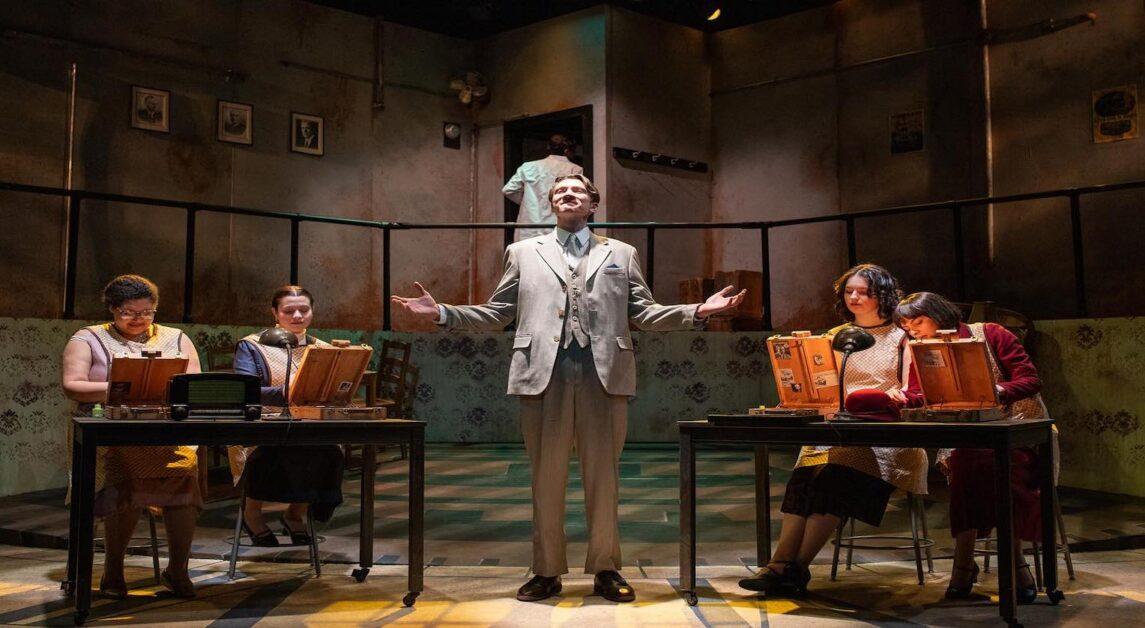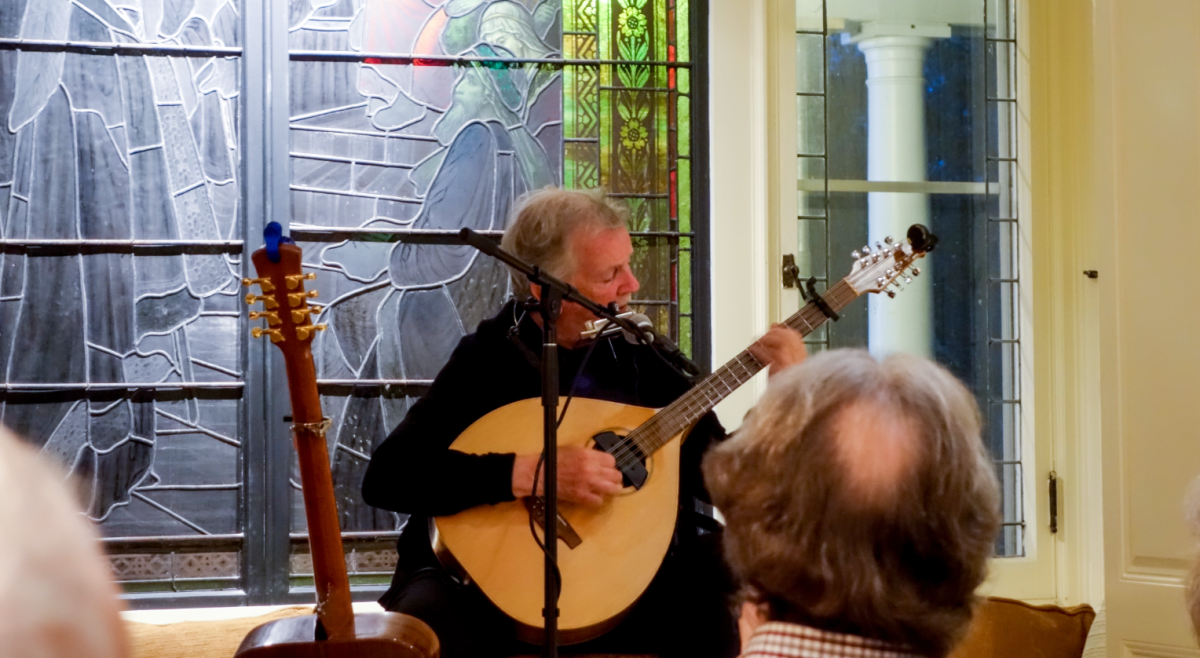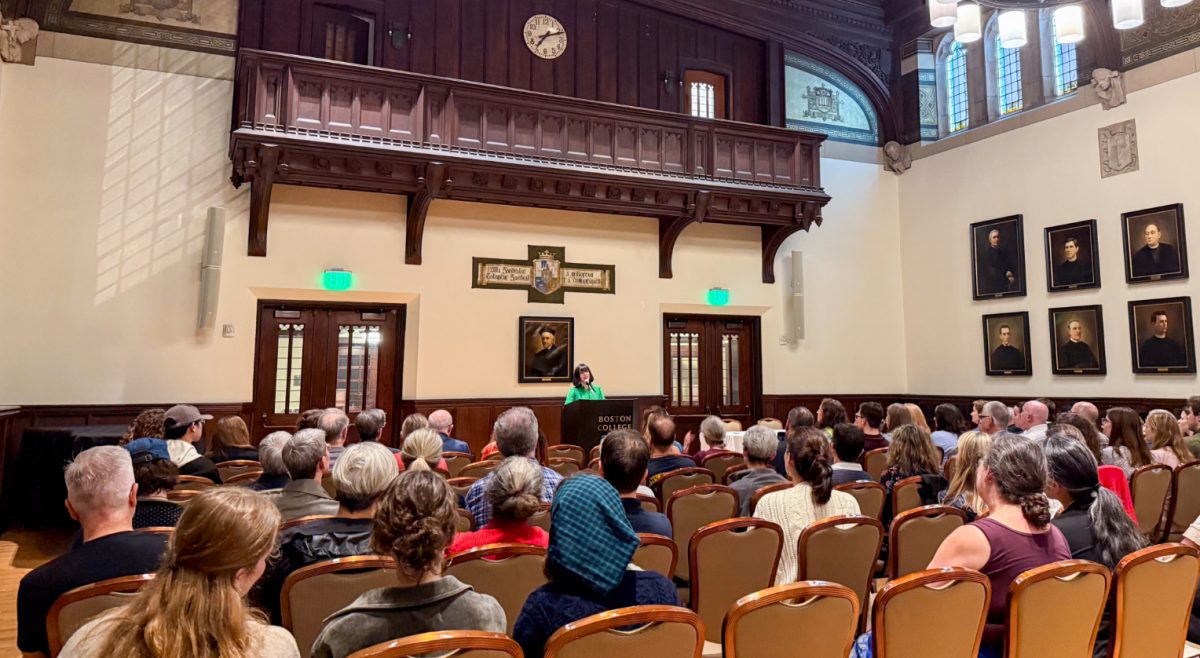Inspired by the touching and powerful narrative of the four women in Melanie Marnich’s 2010 play, Molly Caballero, director and LSEHD ’24, showcases the innate humanity of these female characters in her production of These Shining Lives.
The play follows the life of Catherine Donohue, a 19-year-old mother with a loving husband and two children, who supports her family by working at a factory that paints radium dials. The story unfolds when Donohue and her female co-workers discover they have radium poisoning. The play depicts the real-life events that unfolded in the early 1920s, in which four women, known as the Radium Girls, contracted radiation poisoning from painting radium dials and consequently shaped labor rights in the United States.
“What inspired me to pick this piece is that it tells a woman’s story through a very human perspective,” Caballero said. “I hope that it makes audiences realize that people are so deeply human, and they shouldn’t just be remembered by the one action that ends up in history books. They need to be remembered by their passions, their loves, like the work they did, the people they loved.”
This is why Caballero offers a holistic view of her protagonist’s life, not only focusing on how Catherine’s life slowly ended, but the things she lived for.
“You learn about her life, her children, her husband, what she loves, who her friends are, and you also learn about her fight,” Caballero said.
According to Caballero, in order to ensure actors and production members bring authenticity into the performance, it is essential for her, as director, to prioritize collaboration in the rehearsal room.
Sound is an integral part of the play, not only creating an atmosphere that immerses the audience in the 1920s but also conveys the passage of time and other significant developments.
“Throughout the play, there’s always at least a clock tick happening,” said Abigail Wickman, MCAS ’24 and the play’s sound designer.
The ticking sound of a clock in the background creates an authoritative figure over the characters, showing time being taken away from them and the slow progression of radium affecting their bodies.
According to Wickman, the original script of the play required light projections to open the scenes, but upon the director’s request, they decided to incorporate the elements of sound in the play including radio broadcast recordings.
These recordings were from the actual events unfolding in the 1920s, including the news reports on the lawsuit that the women filed against their employer leading up to the Supreme Court decision which Donahue and her colleagues won in 1938. This incorporation of radio broadcast sounds is heard throughout the play which exhibits the development of the events happening around the main character.
To keep this pattern of development, Wickman mentioned she also recorded the voices of the actors and added a radio effect to accomplish the same effect as the original ones. These small details that the audience wouldn’t notice at first glance are carefully orchestrated by the sound designer and the director to fully immerse the audience in These Shining Lives.
Moments of silence are rare in this play.
“There are only two moments of actual silence where there’s no sound happening in the show,” Wickman said. “We wanted that moment of silence to show that Catherine has a little bit of authority in her story and she has control over the world around her.”
The silence creates an emphasis on the female lead’s powerful monologues in the middle and end of the play, which require the full attention of the audience.
The careful placement of speakers complements the sound design. Wickman explained that two small speakers were placed inside the stairs of both stage right and stage left, allowing a smooth transition from the main speakers to the small speakers. This results in the effect of the presence of a radio which absorbs the audience into Donahue’s world.
Another behind-the-scenes feature to mention is the eye-catching red wool jacket the female lead wears. The signature red jacket was made in the costume shop, a room a few doors behind the Bonn Studio Theater in Robsham Theater.
The sketching process of the costume started in November, according to Mary Zimmerman, MCAS ’25, the play’s costume designer.
Zimmerman explained her approach to costume design, where she and the collective division researched what people wore in the 1920s, ’30s, and ’40s as the play encompasses those decades from start to finish. They also explored the economic dimensions where the play featured members of the working class who were changing status throughout the play.
On top of the careful representation of the clothing in this period play, the costume designer makes another subtle yet deliberate choice. To show the characters growing ill, they layered more grays and beiges toward the end of the play, Zimmerman said. The bright red wool jacket is later replaced with a gray coat.
Makeup too plays a significant role in creating the illusion of the women becoming ill due to radium poisoning. Zimmerman created a multi-step makeup process to represent illness. Throughout the show, the characters’ makeup begins to reveal signs of their sickness, such as whitened lips, hollowed cheeks and darkened under eyes.
Caballero and her crew not only borrowed elements from the past but also incorporated creative elements to showcase the essence of the story.
“The important part of the story isn’t necessarily getting every one of the facts right,” Caballero said. “But it’s kind of conveying the emotion, the strength, and the passion that these women had for both each other and for the fight against the radium dial factory.”
Apart from showcasing the historical significance of the Radium Girls, Caballero believes the play also sheds light on similar narratives in our modern times, such as child labor in cobalt mining abroad.
From the sound design that immerses you in the 1920s to the careful choice of costumes, the inner workings of the BC theatre department have meticulously created the base for an ambitious play.
These Shining Lives will hold performances from Feb. 22 to Feb. 25 in the Bonn Studio Theater.













